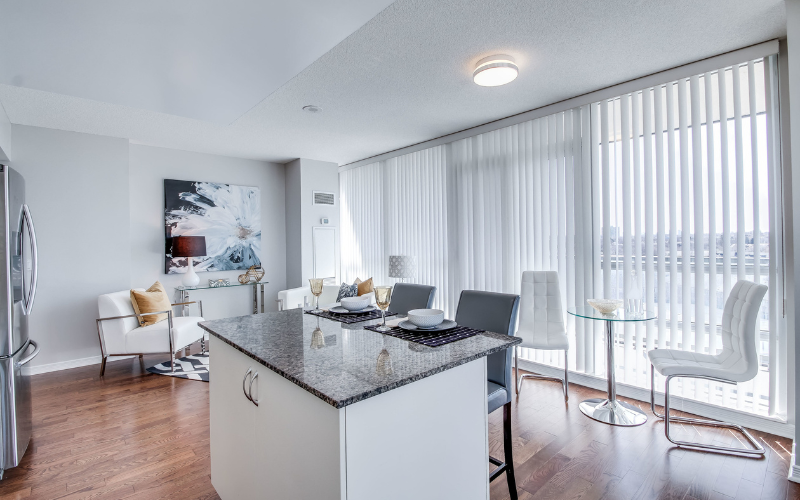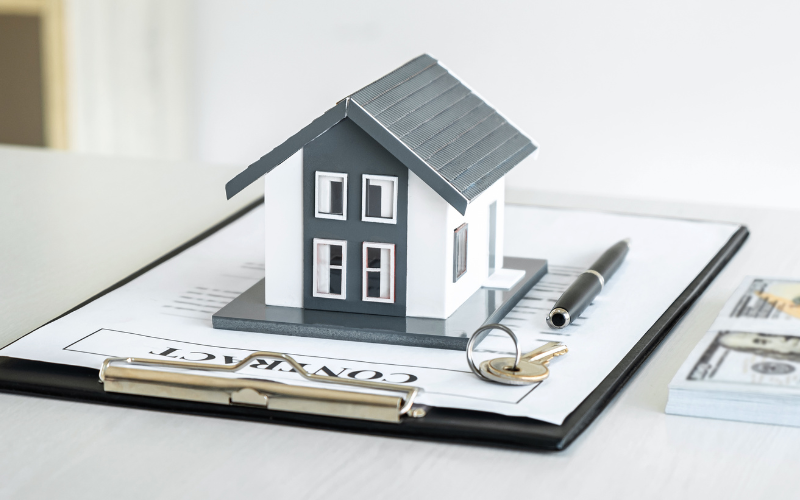Boy, do I have a great topic for you today: must-have home features to successfully age in place. In other words, how you can grow older in your home. As a real estate agent, I tend to be brought in to sell a home when an elderly client or their family realizes that it’s just not possible — for various reasons — to be able to age in place.
If you’re wondering if it’s possible for you to grow older in your home, then this article is for you.
Let me introduce you to my friend, Kent over at At Home Aging, an organization devoted to helping people stay in their home. Without further ado, take it away, Kent!
Aging in place is an extremely common goal among Americans. However, while most people would prefer to remain in their own homes for their golden years, few houses are equipped for aging in place. Moving into a new home may be your best bet for enjoying your retirement in a place that fits your lifestyle and provides the support you need.
Consider Assisted Living
Before you start house hunting, put some careful thought into your care needs. Consider moving into an assisted living facility if you could use some extra help with your daily living tasks. Assisted living communities provide housekeeping services, transportation, nutritious meals, and much more. If that sounds appealing, use online search tools and guides for help finding a good match. These resources can help you find assisted living facilities that fit your care needs and your budget.
If you’d rather age in place and truly don’t foresee help with daily living tasks, consider moving into a new home within your budget that has everything you need. Here are a few essential features to look out for as you search for the perfect place to spend your senior years.
Single-Story Design
According to Direct From The Designers, single-story homes are preferable for many reasons. They let in more natural light and allow for open-concept interior designs. Since they don’t have any staircases, you won’t have to worry about getting around your home if you develop mobility issues in the future. One-story homes are also easy to expand with an accessible sunroom or patio.
Zero-Step Entrances
Look for homes with zero-step entrances so you can feel confident coming and going from your house. Without steps, you’ll be able to navigate your entrance easily with a wheelchair or walker. Even if you don’t have this equipment, steps can pose a dangerous fall hazard. That said, homes with entrance steps can still be accommodating with the right modifications. DailyHomeSafety recommends making stairs safer by keeping them brightly lit, covering steps with rubber treads, and installing handrails.
Open Floor Plan
Open concept floor plans are ideal for seniors who want to age in place. Homes designed with open plans typically combine the kitchen, dining room, and living room into one large, open area. Without excess hallways, corners, and doorways to navigate, seniors tend to have an easier and safer time getting around open floor plan homes. These homes are also great for hosting guests! This may encourage you to have people over or entertain family more often—remember, regular socialization is critical to good mental and physical health.
Walkable Neighborhood
Being able to walk around your neighborhood will benefit you in several ways. Getting out and about is a great way to meet new people and chat with your neighbors. It’s also a wonderful form of aerobic exercise! If there comes a point in your future when you can no longer drive, being able to walk to shops and entertainment opportunities will help you maintain your independence and avoid isolation. As you continue your house-hunting journey, look for walkable neighborhoods near urban cores and public transportation stops.
Smart Home Features
Today, seniors have access to smart home technology that can provide essential assistance with aging in place. If possible, try to find a home with smart features like security systems, smart doorbells, and smart thermostats. Smart fridges and stoves can help you stay organized and prevent dangerous mistakes. Of course, if you find a great home without these features, you can always have these gadgets installed yourself.
As you look for a house, think about the features that will make your home adaptable and accommodating. Your search should go beyond bathroom grab bars or non-slip flooring. Consider the elements that are essential to your quality of life. Home features that promote social engagement and leisure activities are equally as important as those that keep you safe.
If after reading the must-have features of a home to effectively age in place you realized that you won’t be able to age in your home, then we’re here to help. We can help you sell your current home so you can either find a new home or move to another living arrangement.
Need to find a new home ideal for aging in place? Work with the skilled professionals at the Dolinski Group Call (517) 244-6044 or send a message.



